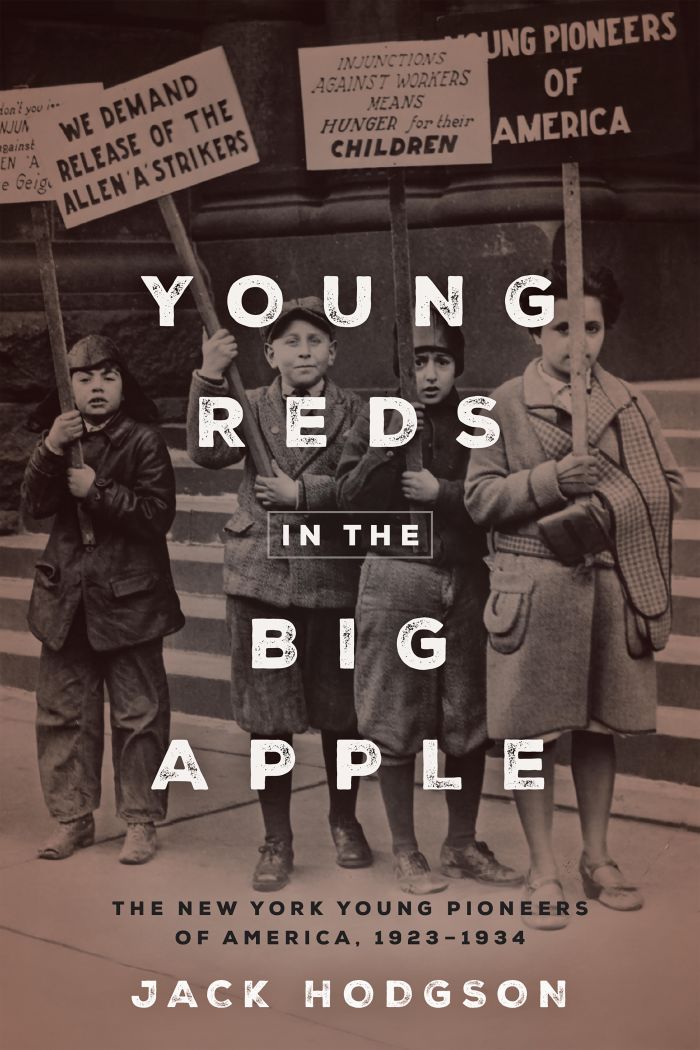Save 25% plus free shipping during our Winter Sale! Use promo code JOY2025. Expires 1/5/26.
Young Reds in the Big Apple
The New York Young Pioneers of America, 1923-1934

This book can be opened with

The tale of New York’s Young Reds—a riveting journey through the YPA’s rise and influence
Young Reds in the Big Apple: The New York YPA, 1923–1934 by Jack Hodgson is a compelling historical account that delves into the heart of American communism through the lens of New York City’s Young Pioneers of America (YPA). This meticulously researched book sheds light on a neglected aspect of American history, revealing the intricate details of the YPA’s formation, ideologies, and activities from 1923 to 1934.
Hodgson illustrates the YPA’s journey, from its early days as a branch of the Communist Party USA, intended for youth aged 8–16, to its eventual disbandment. The book explores the organization’s unique structure, ethos, and activities, showcasing how it became a formidable force in New York’s political landscape. He vividly portrays the YPA members’ involvement in public protests, education reform, and their bold stance against prevailing social norms, including racial and gender issues.
The narrative goes beyond mere historical recounting, offering deep insights into the internal dynamics of the YPA, its relationship with the adult Communist Party, and its interactions with other political entities. Hodgson’s analysis of the YPA’s impact on its young members and the broader community is both insightful and thought-provoking.
Young Reds in the Big Apple stands out for its rigorous approach to a controversial subject, avoiding partisanship to provide a balanced view of the YPA’s legacy. This book is not just a historical account; it’s an exploration of youthful activism, political movements, and the complexities of American communism during a pivotal era.
Jack Hodgson narrates a significant aspect of the history of the American left that no scholar has revealed before. Young Reds in the Big Apple is also a delight to read.—Michael Kazin, author of What It Took to Win: A History of the Democratic Party
This book is a welcome contribution to the research on the relationship between radical, left-wing movements and children. What Hodgson has done is to focus on one of the unique aspects of the Young Pioneers in the US, sponsored by the CPUSA during the 1920s: their belief in the importance of children. Much of the previous work in this area has looked at the relations between red parents and their children. Hodgson takes the Young Pioneers own focus on the autonomous activity and development of the children themselves. He has found very important new sources and has brought to light childrens' stories of their own activism.—Paul C. Mishler, author of Raising Reds: The Young Pioneers, Radical Summer Camps, and Communist Political Culture in the United States
A compelling analysis of interwar radicalism and the continuation of the Red Scare state. Hodgson offers new insights into young people’s radical beliefs and activism and how these were shaped by a period of continued radical thought and consequent Red Scare state.—Britt Haas, Siena College
List of Abbreviations | vii
Introduction | 1
Part I: A New Vision for American Communist Childhood
1. The JSYWL and YPA Regulations | 13
2. Leo Granoff: Harlem’s “Boy Trotsky” and YPA Tactics | 20
3. Radical Recreations | 31
Part II: Children of the Class Struggle
4. Pioneer Politicians and the CPUSA | 55
5. Pioneers and Picket Lines | 65
Part III: The School Struggle
6. Countering Capitalist Curriculum and Corporal Punishment | 77
7. School Lunch Revolts | 84
8. The Lenin Unit at PS 61 | 91
Part IV: Pioneers and Political Opponents
9. Periodical Culture, the Fish Inquiry, and the US Post Office | 105
10. The Van Etten Camp Controversy | 118
11. Bashing the Boy Scouts and the Campaigns to Free Harry Eisman | 130
Conclusion | 157
Acknowledgments | 163
Appendices | 165
Notes | 171
Bibliography | 189
Index 195




